Piedras Blancas Motel
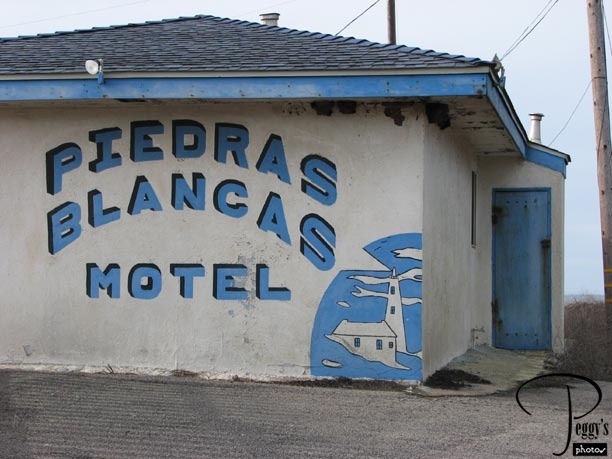
The meeting point for the tour that I was to take this morning was at the Piedras Blancas Motel. Dale and Brian had appointments today so I went out exploring on my own.

Piedras Blancas Motel
Piedras Blancas Motel
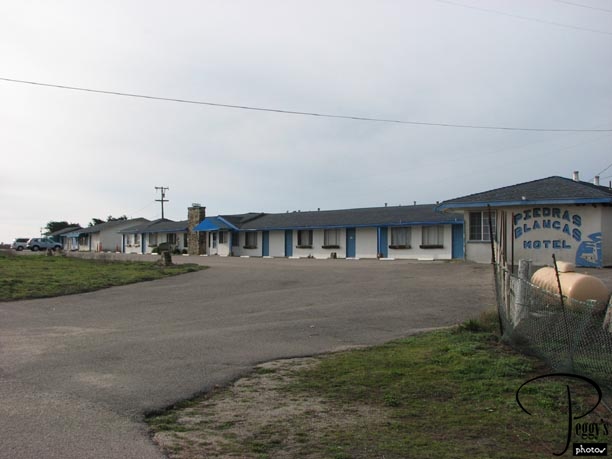
The motel is closed for restoration. It may be awhile before it is restored.

Piedras Blancas Motel
Piedras Blancas Motel
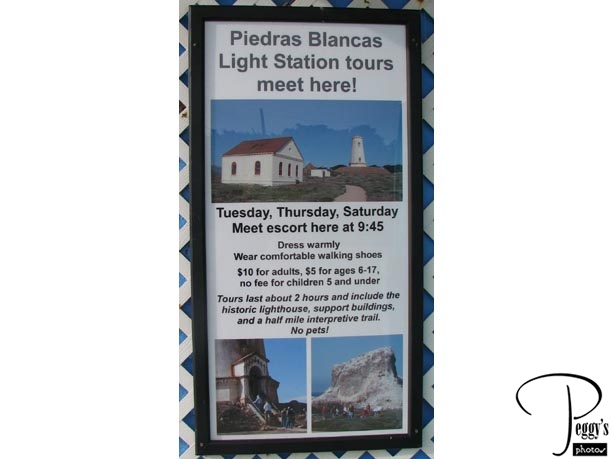
Piedras Blancas Light Station Tours meeting sign. These are relatively new tours, now given three days a week. No reservations are required for the tours––just be at the motel by 9:45 a.m. I am finding three spellings for the Light Station: Piedras Blanco, Piedras Blanca, and Piedras Blancas. I will use the last spelling as it appears on the tour notice.

Piedras Blancas Motel
Piedras Blancas Motel
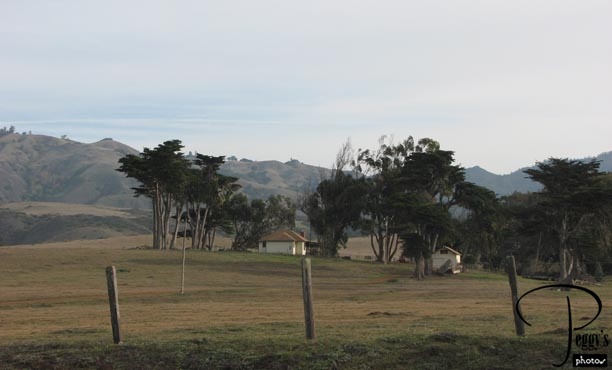
View of the countryside across Highway 1 from the motel. You’ll see many windswept trees in this area.

Piedras Blancas Motel
Piedras Blancas Motel
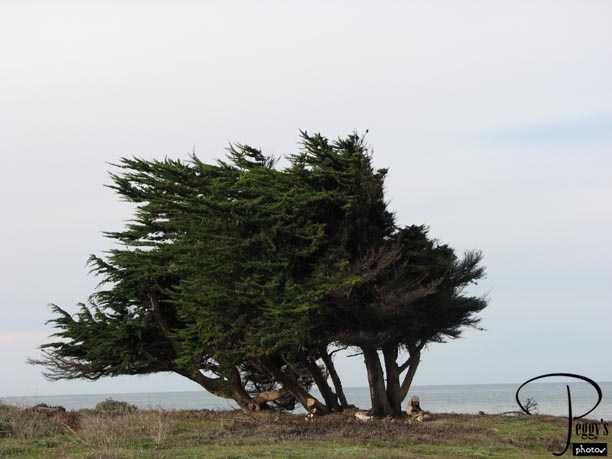
A windswept tree on the ocean side.

Piedras Blancas Motel
Piedras Blancas Light Station
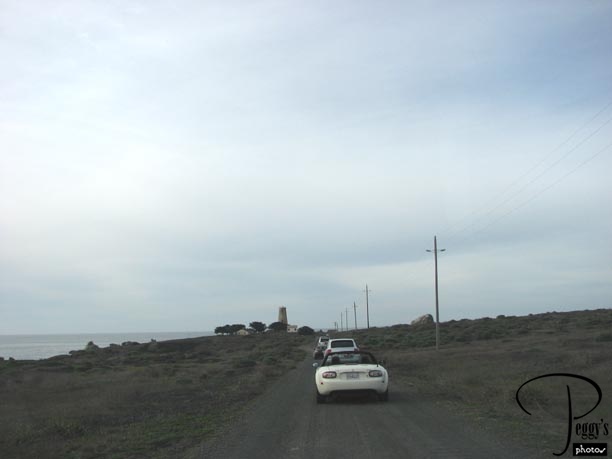
A guide came to collect money for the tour ($10) and then we followed her in our own cars to the light station.

Piedras Blancas Light Station
Piedras Blancas Light Station
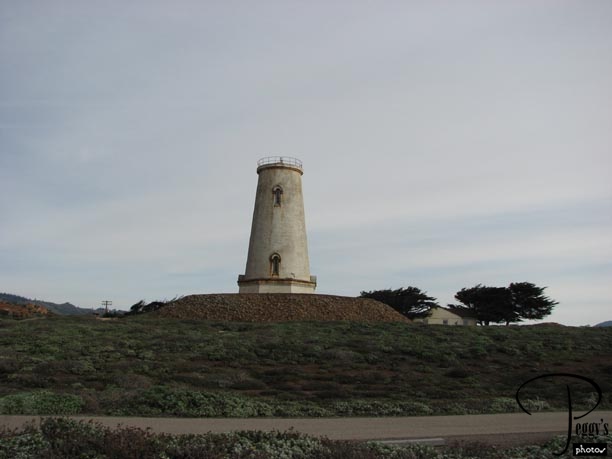
Our first close–up view of the Piedras Blancas Lighthouse, built in 1875.

Piedras Blancas Light Station
Piedras Blancas Light Station
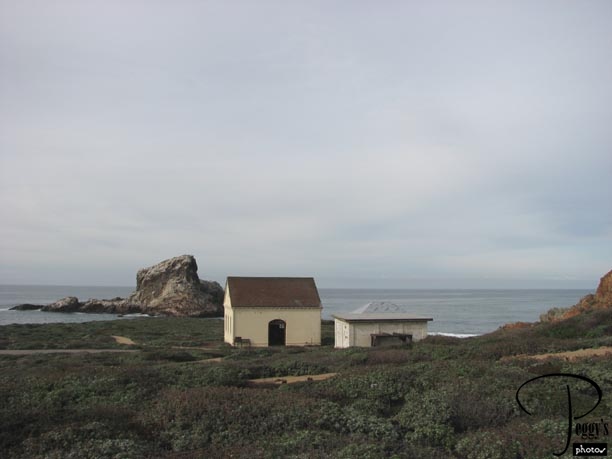
The Piedras Blancas Light Station was named for three large white rocks offshore. They have been made white by the seagulls. The larger of the three rocks is shown in the photo. The larger building is the Fog Signal Station and the smaller building is the Fuel Storage Shed.

Piedras Blancas Light Station
Piedras Blancas Light Station
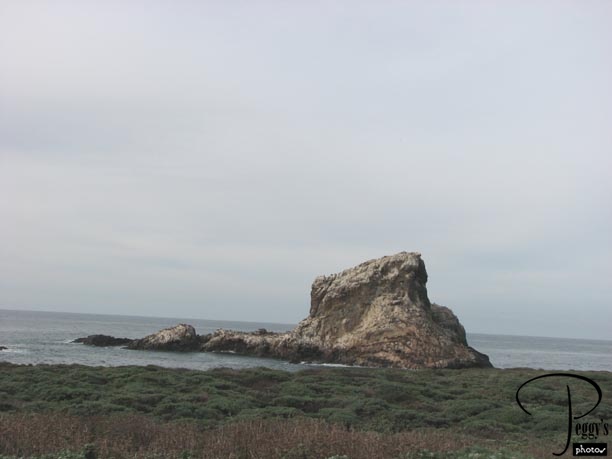
Closer–up view of the larger of the Piedras Blancas.

Piedras Blancas Light Station
Piedras Blancas Light Station
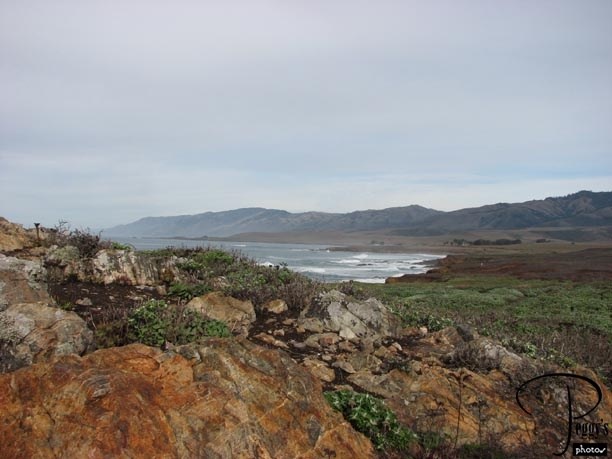
View to the north from the top of the hill. The red color in the rocks is cinnabar (red mercury sulfide).

Piedras Blancas Light Station
Piedras Blancas Light Station
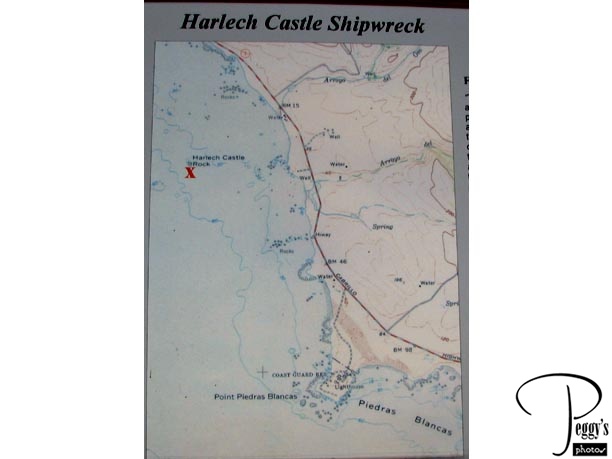
There were two historic shipwrecks off the coast in the area seen in the last photo before the light station was built. One was of the Harlech Castle in 1869. Three crewmen died and seven were saved.

Piedras Blancas Light Station
Piedras Blancas Light Station
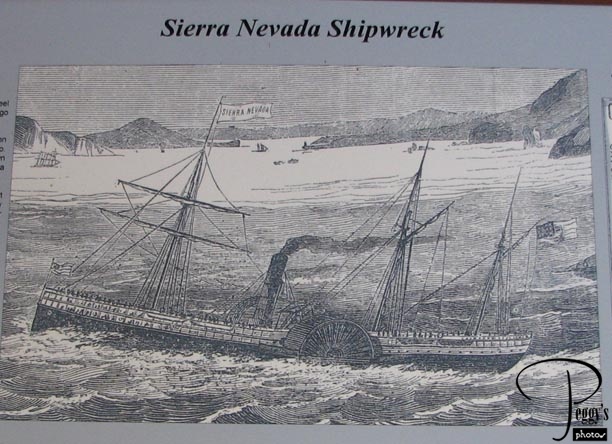
The other one, also in 1869, was of the Sierra Nevada. We weren’t told of any shipwrecks occurring after the light station was built.

Piedras Blancas Light Station
Piedras Blancas Light Station
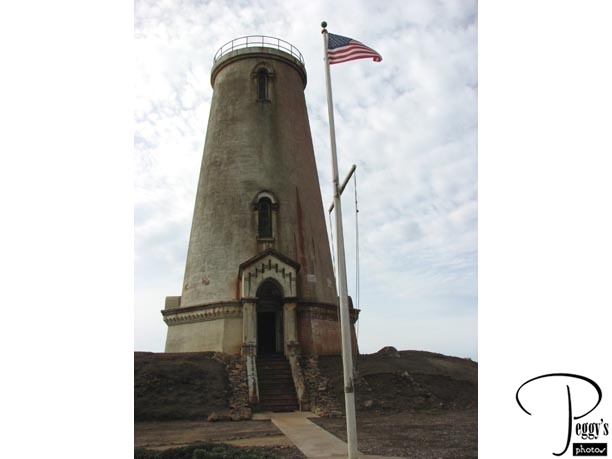
The entrance side of the lighthouse.

Piedras Blancas Light Station
Piedras Blancas Light Station
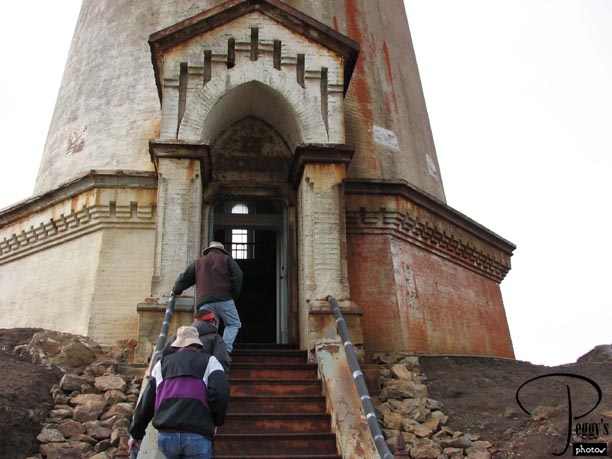
My tour walking into the lighthouse.

Piedras Blancas Light Station
Piedras Blancas Light Station
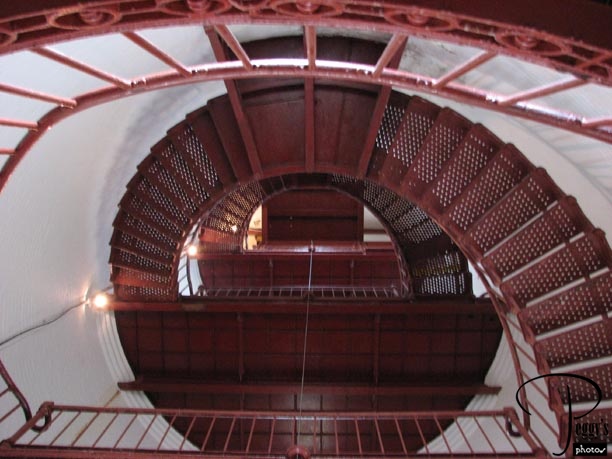
The stairs up to the top. We weren’t allowed to climb up. I was not at all disappointed as I wouldn’t have done it.

Piedras Blancas Light Station
Piedras Blancas Light Station
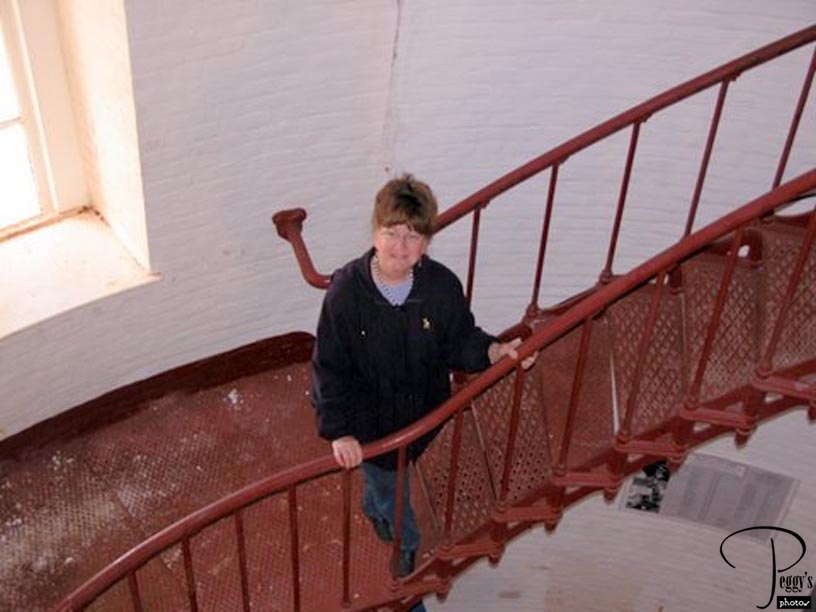
Brian and Dale had previously gone on a special tour of the lighthouse in which climbing up to the top was allowed. Dale made it to the first level––much better than I would have done. (Brian’s photo)

Piedras Blancas Light Station
Piedras Blancas Light Station
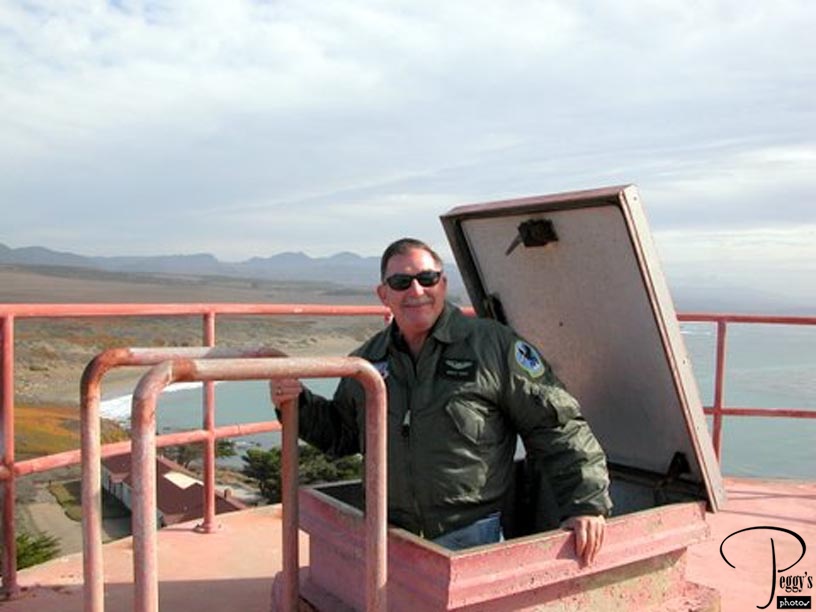
Brian climbed all the way up. (Brian’s photo)

Piedras Blancas Light Station
Piedras Blancas Light Station
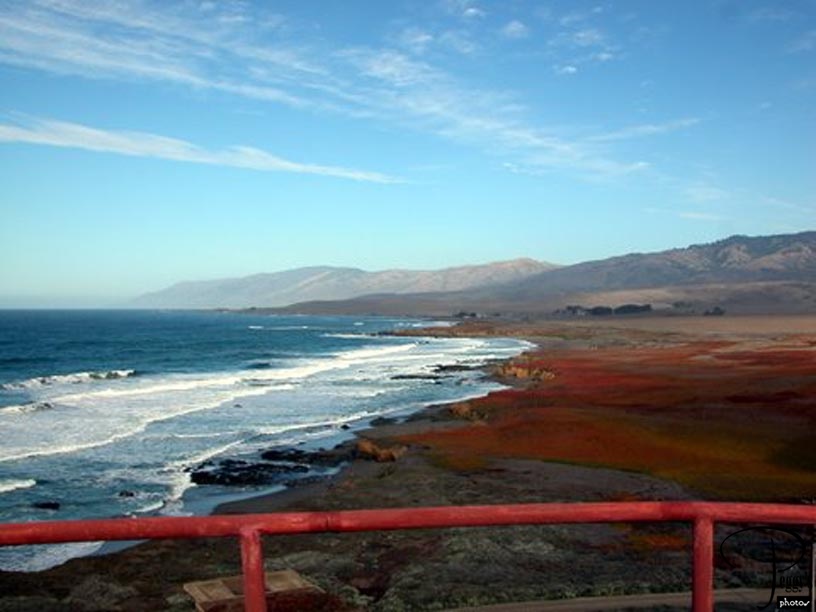
View to the north from the top. (Brian’s photo)

Piedras Blancas Light Station
Piedras Blancas Light Station
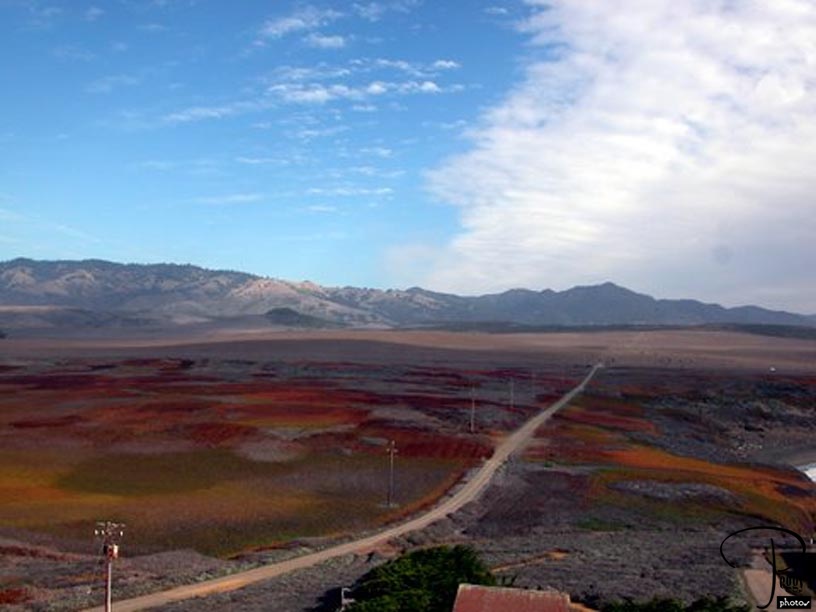
View to the east from the top. (Brian’s photo)

Piedras Blancas Light Station
Piedras Blancas Light Station
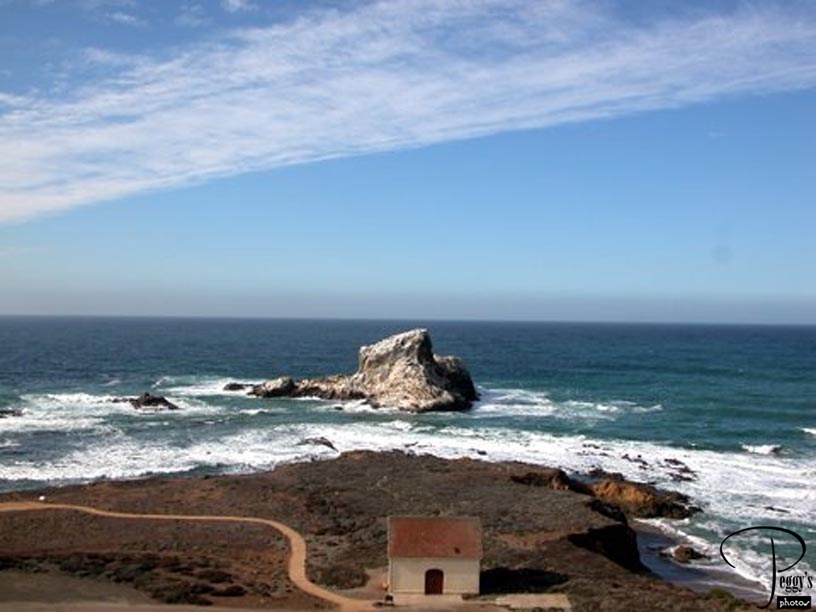
View of the ocean from the top. (Brian’s photo)

Piedras Blancas Light Station
Piedras Blancas Light Station
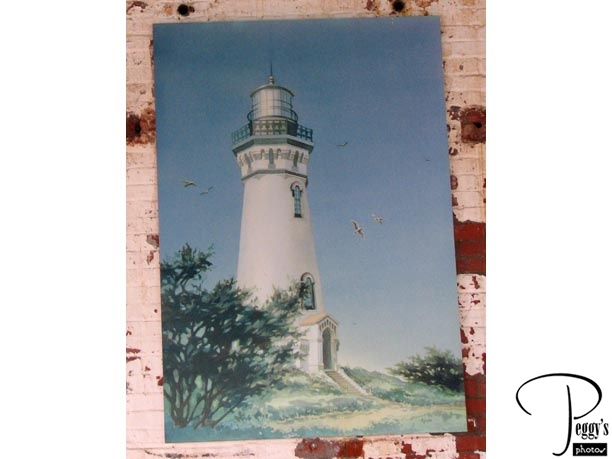
The lighthouse used to have a lantern room on its top. However, it was damaged in a storm in 1949 and the Fresnel lens was removed.

Piedras Blancas Light Station
Piedras Blancas Light Station
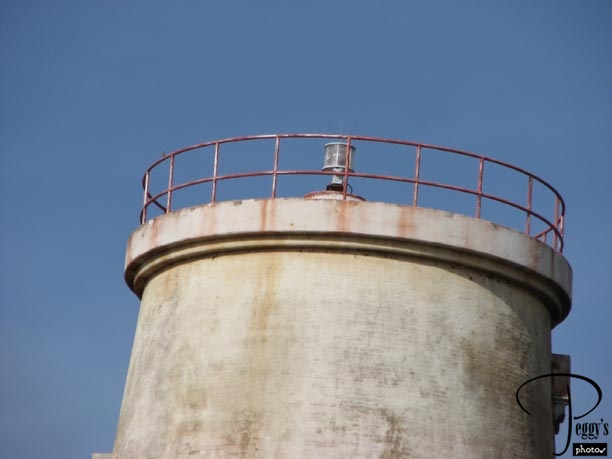
he lens was replaced with a rotating aerobecon.

Piedras Blancas Light Station
Piedras Blancas Light Station
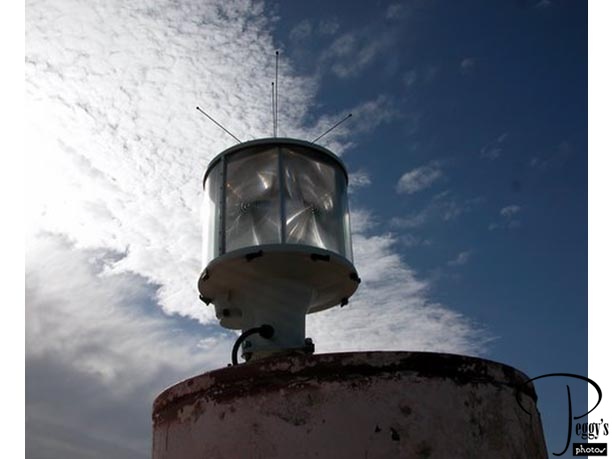
Close–up view of the aerobecon. (Brian’s photo)

Piedras Blancas Light Station
Piedras Blancas Light Station
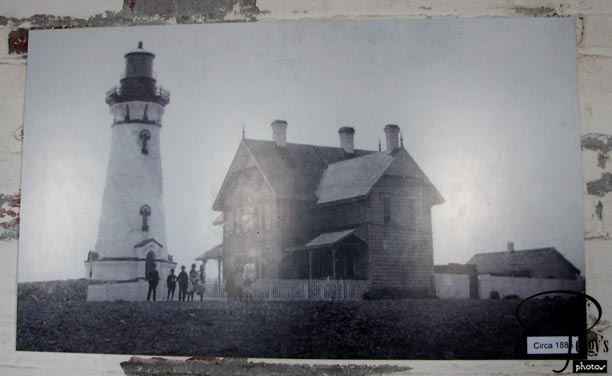
Originally, there was a large Victorian house next to the lighthouse for the light keepers. It has been torn down.

Piedras Blancas Light Station
Piedras Blancas Light Station
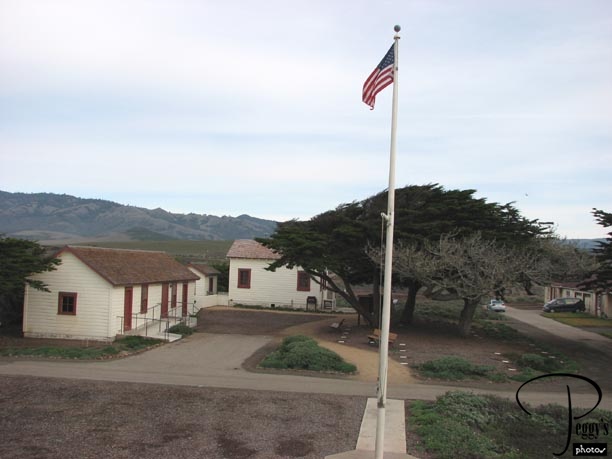
Some of the buildings used now for housing and offices.

Piedras Blancas Light Station
Piedras Blancas Light Station
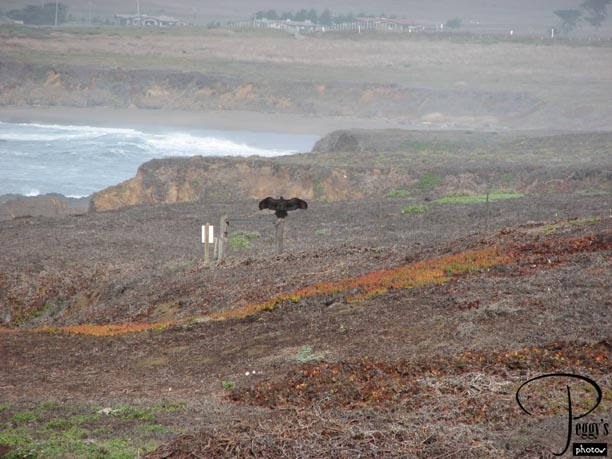
One of the men on my tour, using binoculars, spotted this turkey vulture.

Piedras Blancas Light Station
Piedras Blancas Light Station
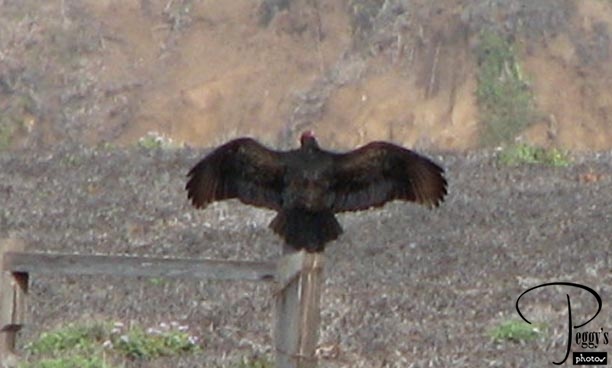
Close–up of the turkey vulture.

Piedras Blancas Light Station
Piedras Blancas Light Station
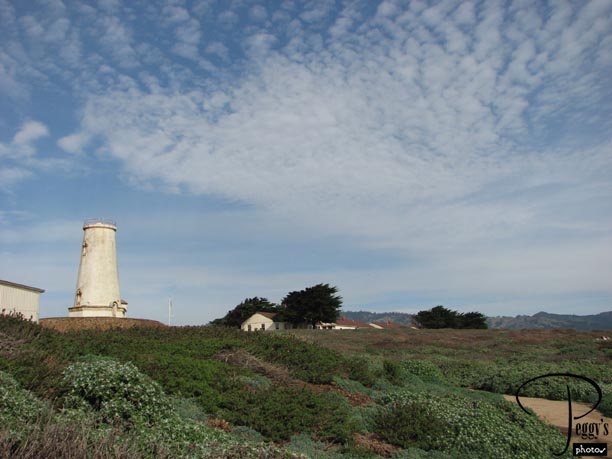
Another view of the lighthouse.

Piedras Blancas Light Station
Piedras Blancas Light Station
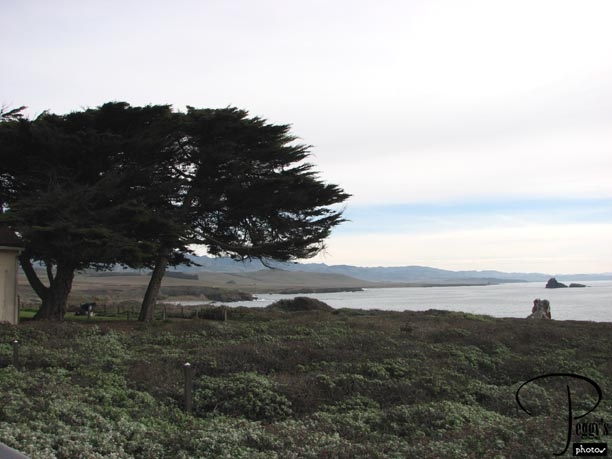
A view of the ocean.

Piedras Blancas Light Station
Piedras Blancas Light Station
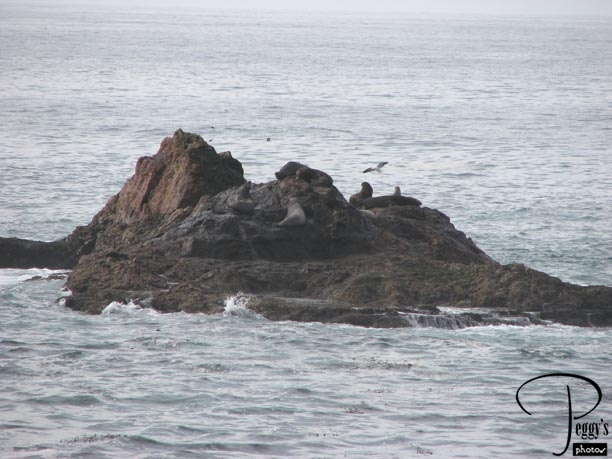
Sea lions on one of the rocks.

Piedras Blancas Light Station
Piedras Blancas Light Station
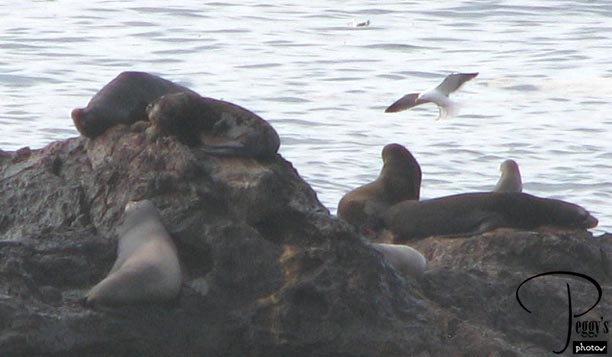
Close–up of the sea lions.

Piedras Blancas Light Station
Piedras Blancas Light Station
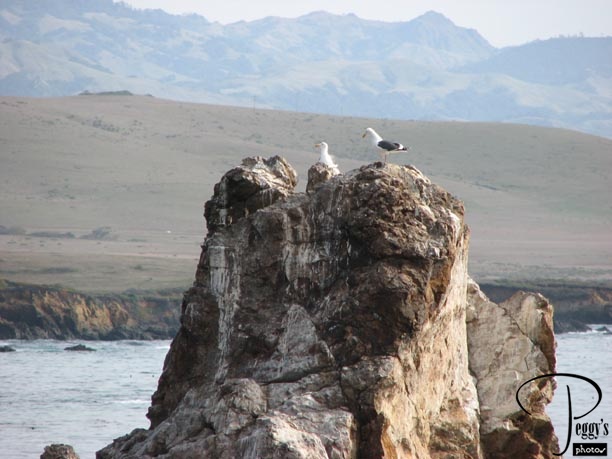
Sea gulls on another rock.

Piedras Blancas Light Station
Piedras Blancas Light Station
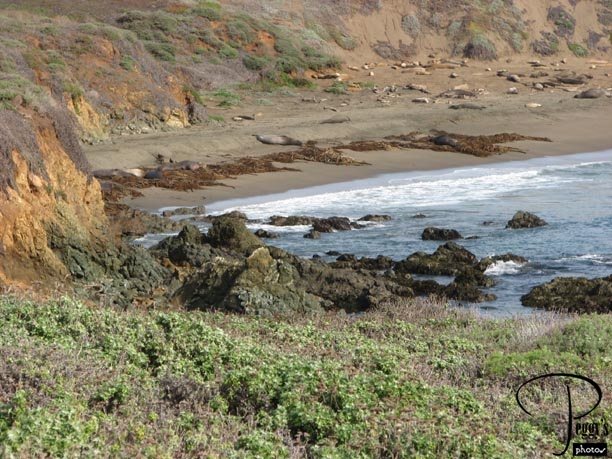
Looking to the shore. Another elephant seal resting beach.

Piedras Blancas Light Station
Piedras Blancas Light Station
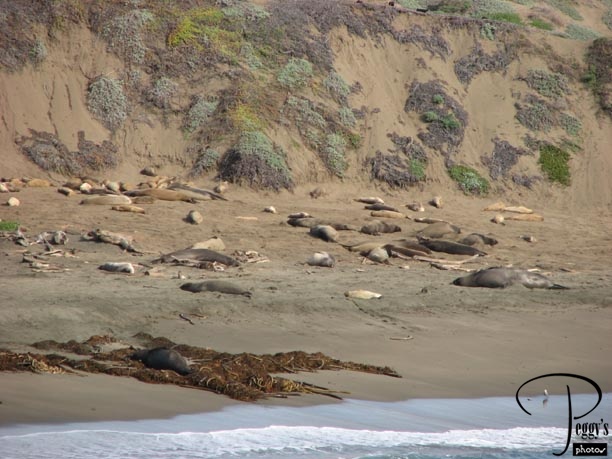
Close–up of the elephant seals.

Piedras Blancas Light Station
Piedras Blancas Light Station
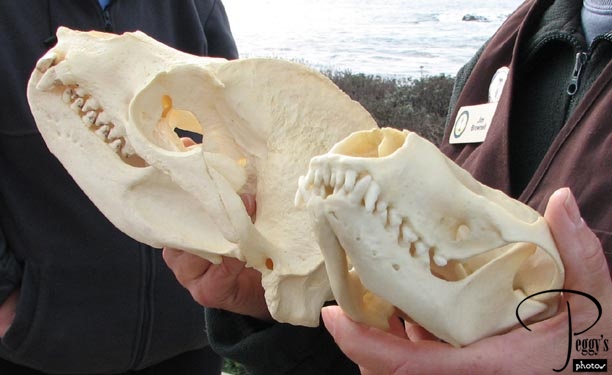
Elephant seal skulls. The larger skull is of the male and the smaller one is of the female––a big difference in size.

Piedras Blancas Light Station
Piedras Blancas Light Station
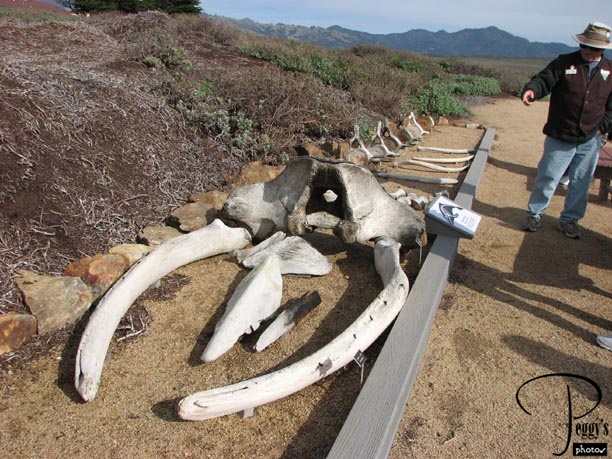
Skeleton of a 30–foot–long humpback whale washed ashore in November 2008.

Piedras Blancas Light Station
Piedras Blancas Light Station
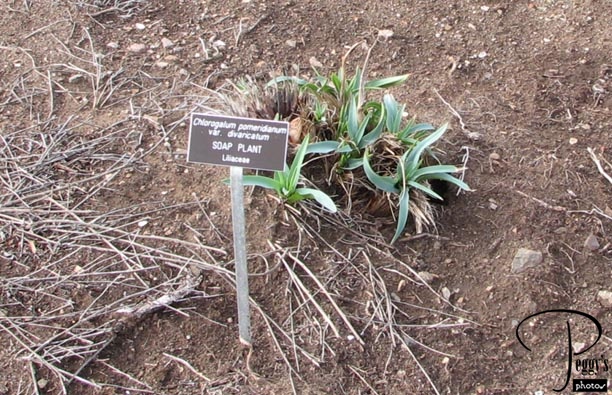
A soap plant.

Piedras Blancas Light Station
Piedras Blancas Light Station
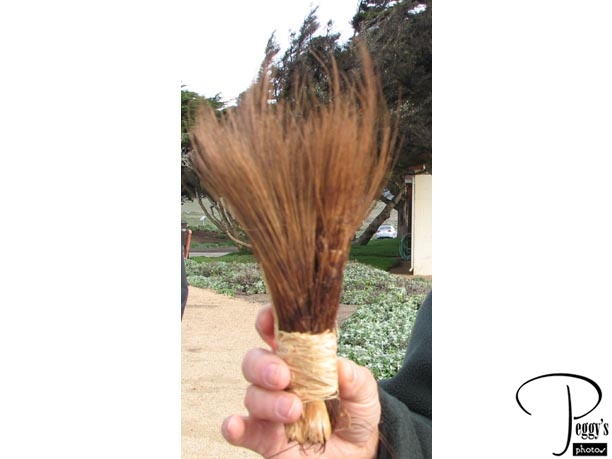
The soap plant grows from underground bulbs. The Native Americans used the bulbs as a soap. They also used the leaves for such things as brooms.

Piedras Blancas Light Station
Piedras Blancas Light Station
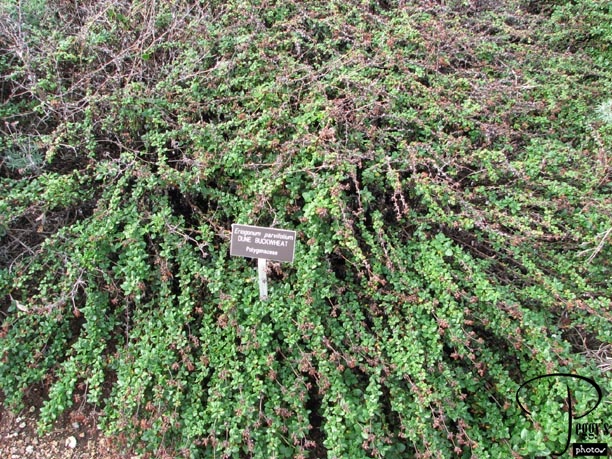
There is an effort to rid the property of ice plant, a planted non–native species that has wiped out much of the native vegetation. One native plant here is the dune buckwheat.

Piedras Blancas Light Station
Piedras Blancas Light Station
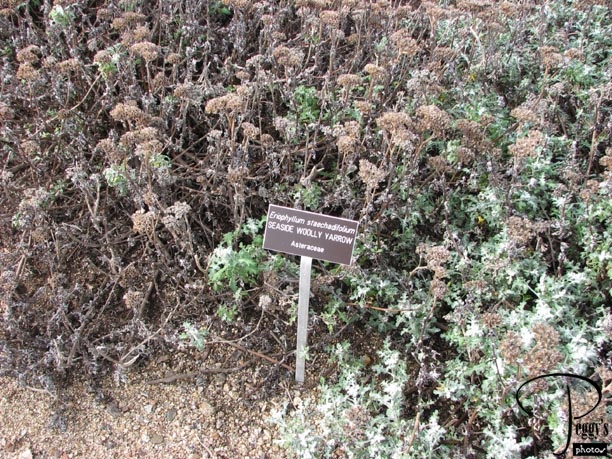
Another is the seaside woolly yarrow.

Piedras Blancas Light Station
Piedras Blancas Light Station

Some of the plants are just starting to bloom. Full bloom is expected around February.

Piedras Blancas Light Station
Piedras Blancas Light Station
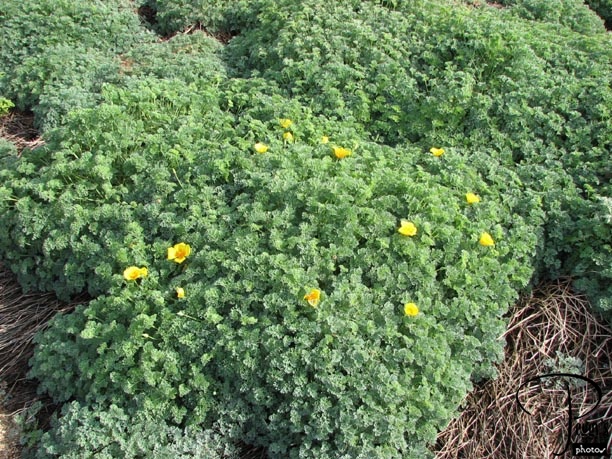
This plant is also starting to bloom.

Piedras Blancas Light Station
Moonstone Beach
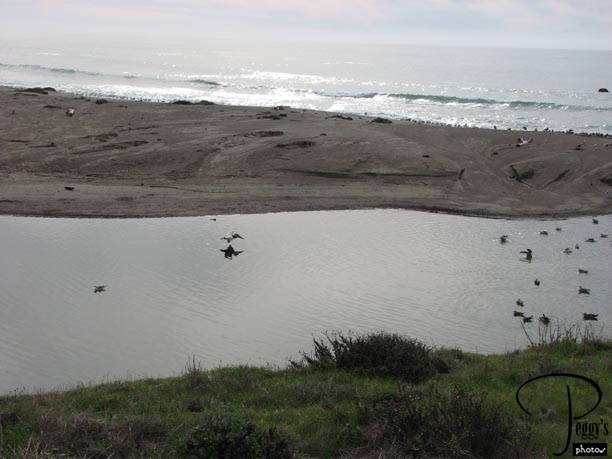
The tour was over and I drove south to Moonstone Beach, the beach just down the hill from Brian and Dale’s house. Yesterday, Brian pointed out some rocks where the harbor seals hang out, but I forgot at what part of the beach the rocks were. So I took photos of another part of the beach. I caught a pelican in flight.

Moonstone Beach
Moonstone Beach
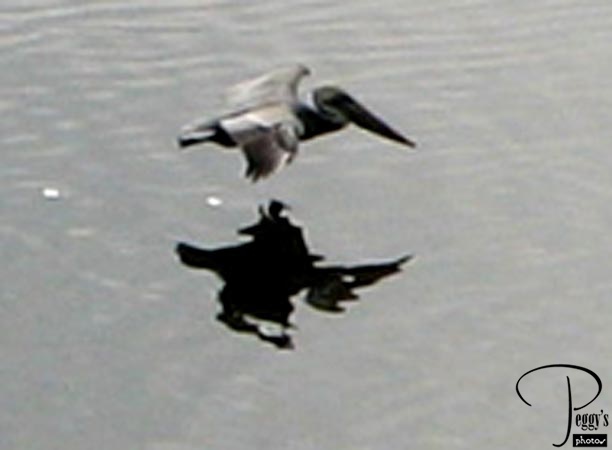
Close–up of the pelican.

Moonstone Beach
Moonstone Beach
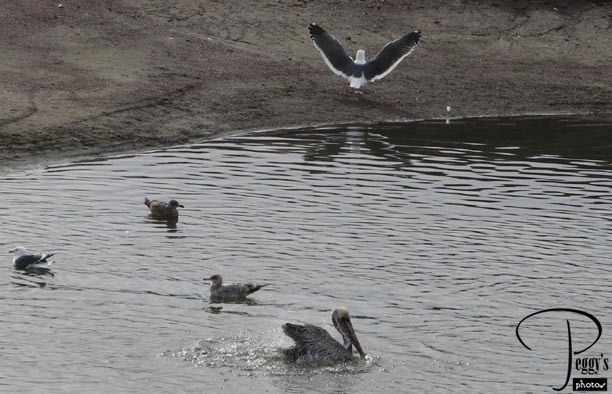
The pelican has landed.

Moonstone Beach
Moonstone Beach
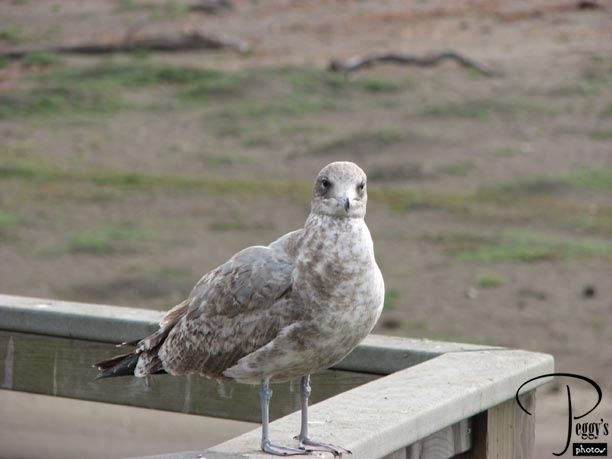
A young seagull.

Moonstone Beach
Moonstone Beach
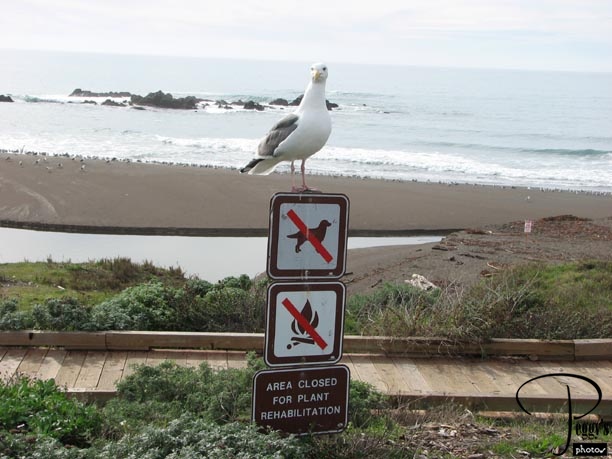
This seagull was staring at a car parked in front of it in which several people were eating their lunch. He was hoping for some of it.

Moonstone Beach
Cambria
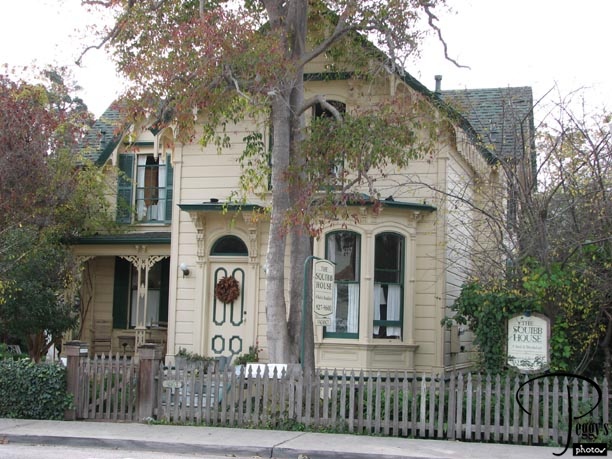
I next drove into the village of Cambria to eat lunch (at the French Bakery) and to take photos. I have put these photos on a slide show on this website: Go to Slide Shows, United States, California, “Cambria: East and West Villages.” From the slide show, you will see why Cambria was named by Forbes Traveler one of the 20 prettiest small towns in America for 2009.

Cambria
Moonstone Beach
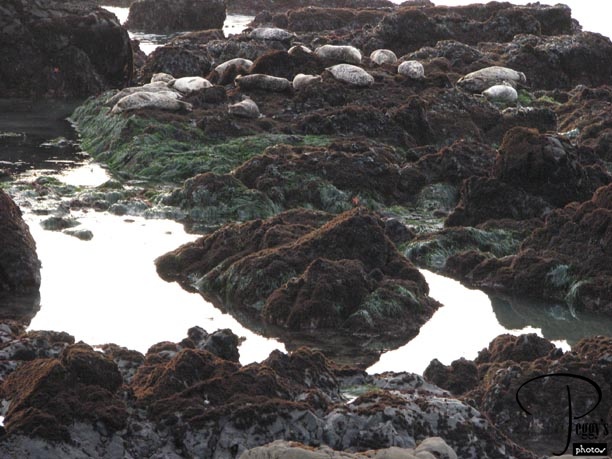
When I told Brian that I couldn’t find the Moonstone Beach seals, he drove me to the beach to show them to me (they are at the far north end of the beach). It was low tide and the best time to be able to see the seals. These are harbor seals.

Moonstone Beach
Moonstone Beach
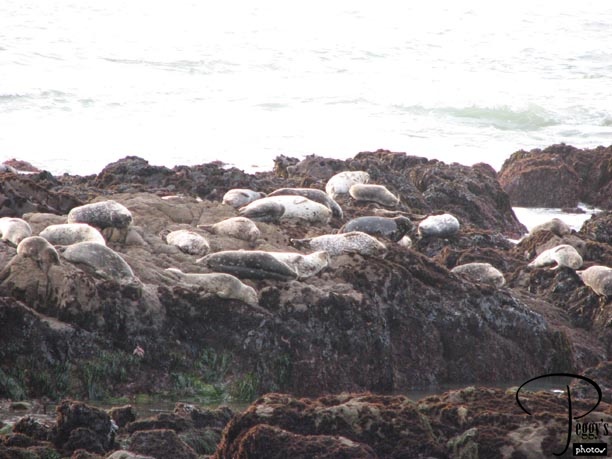
A closer–up view of the harbor seals.

Moonstone Beach
Moonstone Beach
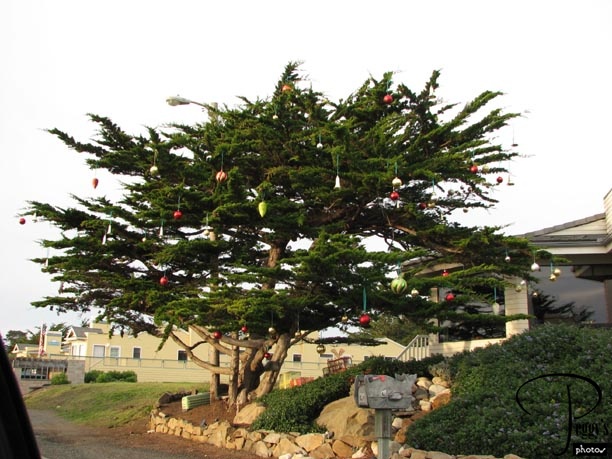
A tree at Moonstone Beach decorated for Christmas.

Moonstone Beach
On the Way to the Hearst Castle
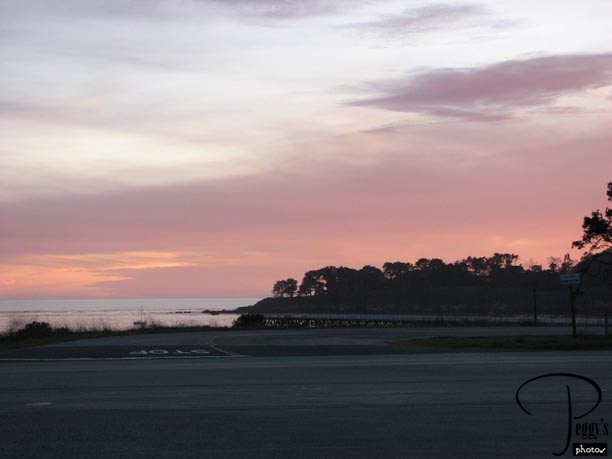
Tonight I took the Night Christmas Tour at Hearst Castle. Brian and Dale had already taken it, so I went on my own. Brian works security at Hearst Castle and knew of this tour and told me about it. I stopped outside the Hearst Castle turnoff to take this photo of the sunset off the San Simeon pier.

On the Way to the Hearst Castle
On the Way to the Hearst Castle
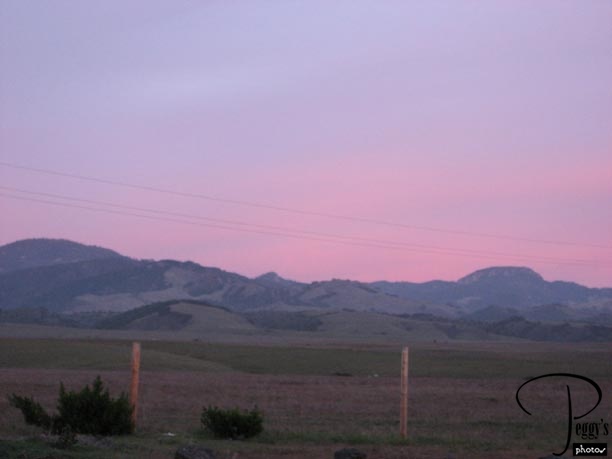
The sunset over the hills.

On the Way to the Hearst Castle
On the Way to the Hearst Castle
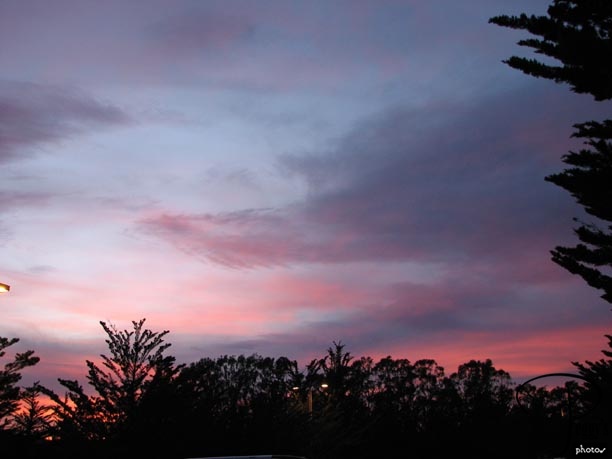
The sky became really beautiful.

On the Way to the Hearst Castle
Hearst Castle
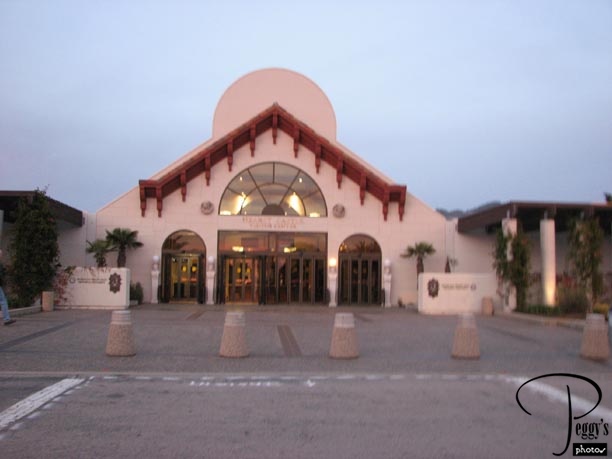
Ticket office and tour meeting place for Hearst Castle.

Hearst Castle
Hearst Castle
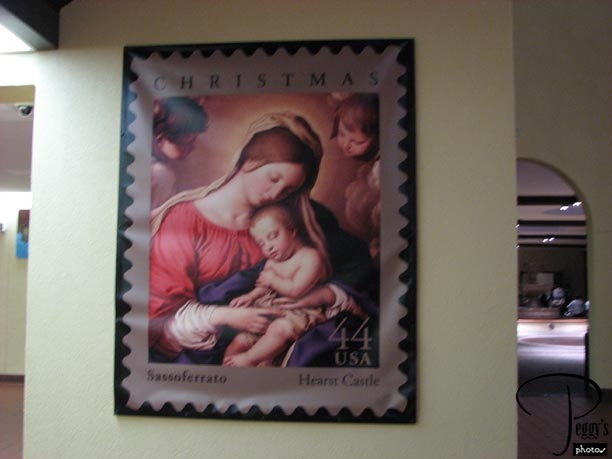
This year’s Christmas stamp is a copy of the “Virgin and Child” by Sassoferrato which hangs in the Hearst Castle. I did not see the painting on my tour.

Hearst Castle
Hearst Castle
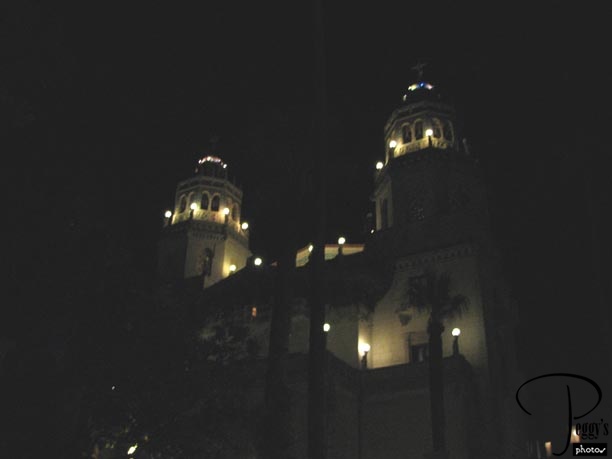
I have taken two day tours of the castle but never a night tour. The grounds and castle rooms were not well lit as the mood is to be a re–creation of how the castle actually looked at night when it was in use by William Randolph Hearst. No flash was allowed, so my photos have come out rather dark. The castle and the other buildings are called “La Cuestra Encantada”––”The Enchanted Hill.” In 1919, William Randolph Hearst commissioned architect Julia Morgan to build him a castle. It was completed in 1947. It was given to the state of California in 1958. The castle and other buildings have a total of 165 rooms and there are 127 acres of gardens, pools, and walkways. Photo: the Casa Grande, the main house.

Hearst Castle
Hearst Castle
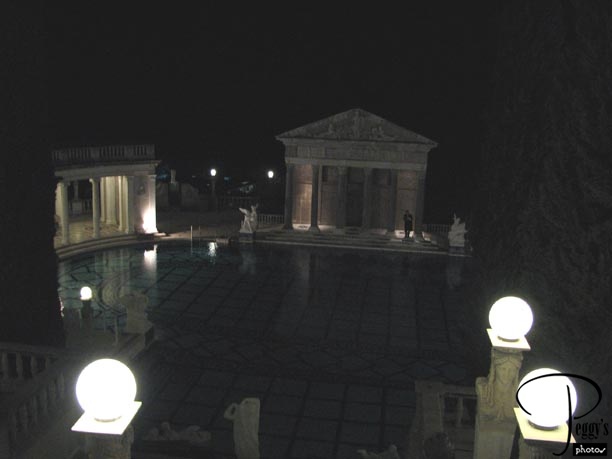
The Neptune Pool. If you look closely, you can see a man standing on the pool deck. He is a Living History docent. The docents dress up in period clothes to give visitors a feeling of the castle’s time in history. On the tour, much is said of the guests of William Randolph Hearst who came to the La Cuestra Encantada: Marion Davies (Hearst’s girlfriend), Mary Pickford, Errol Flynn, Greta Garbo, Carole Lombard, Winston Churchill, Calvin Coolidge, George Bernard Shaw, Charles Lindbergh, Howard Hughes, etc. They took the train to San Luis Obispo and then were driven by taxi to the castle.

Hearst Castle
Hearst Castle
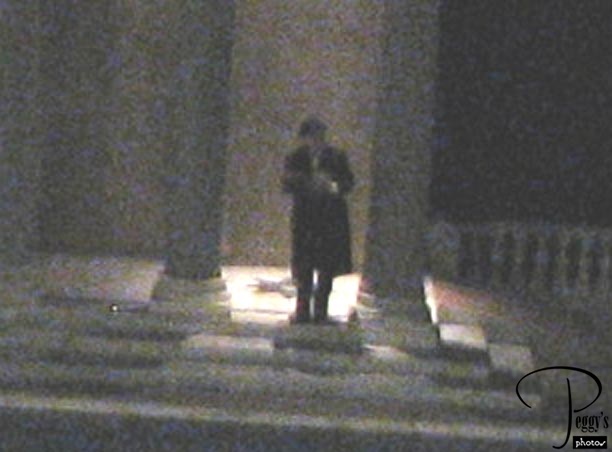
Close–up of the Living History docent.

Hearst Castle
Hearst Castle
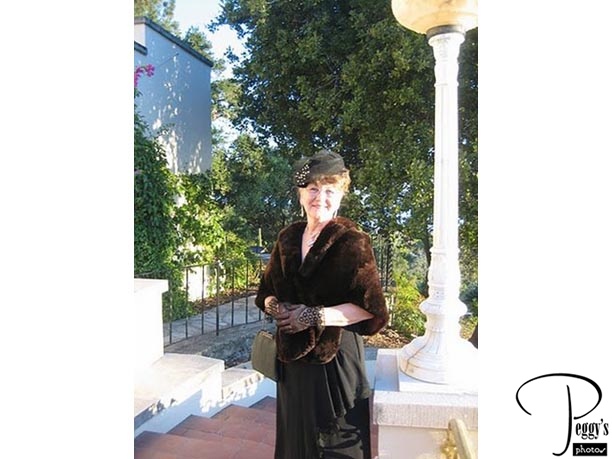
Dale was a Living History docent. I would have loved to have seen her dressed up here. (Brian’s photo)

Hearst Castle
Hearst Castle
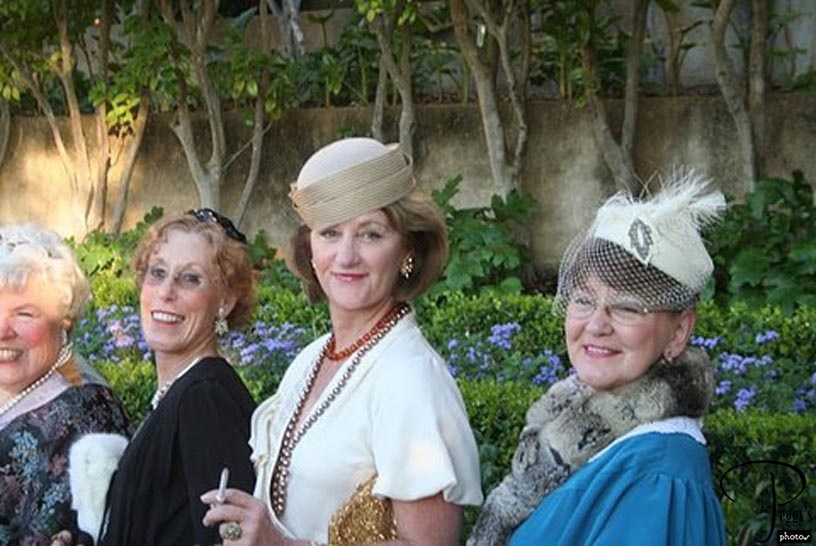
Another photo of Dale plus three other Living History docents. (Brian’s photo)

Hearst Castle
Hearst Castle
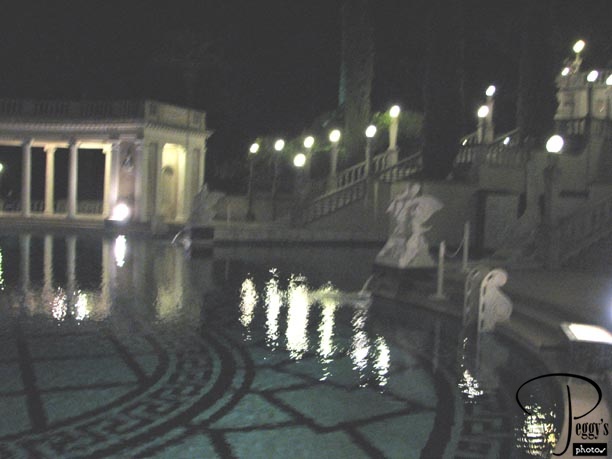
The other side of the Neptune pool.

Hearst Castle
Hearst Castle
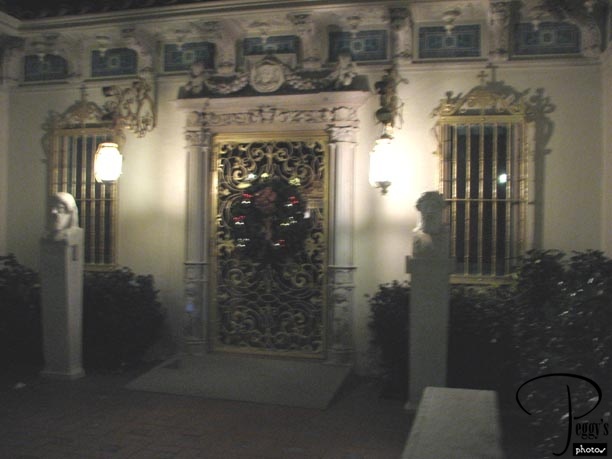
We were first to visit this guest house.

Hearst Castle
Hearst Castle
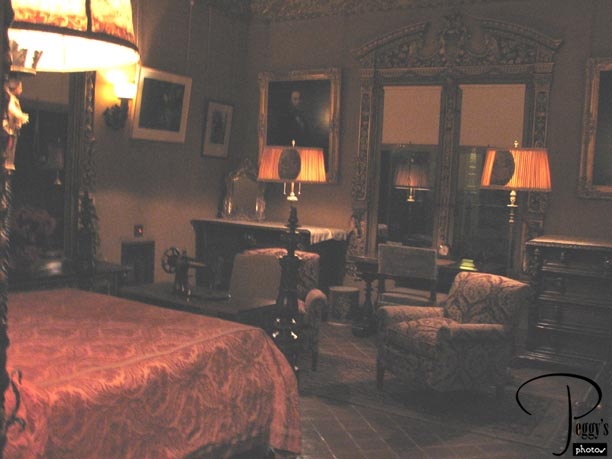
Guest house bedroom.

Hearst Castle
Hearst Castle
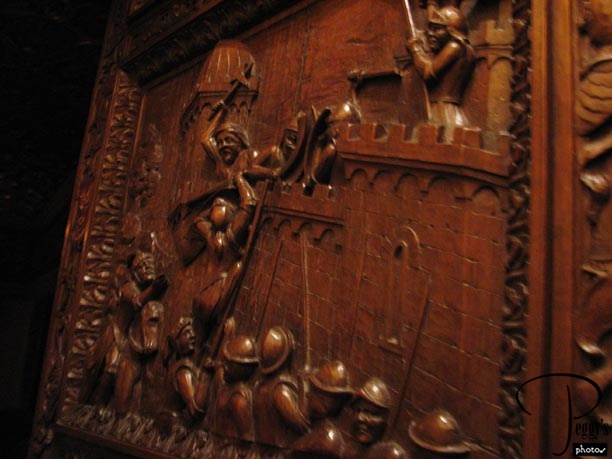
A door in the guest house. Doors were carved, tapestries and paintings were on the walls, expensive antique furniture was seen throughout, ceilings were detailed, statues and art objects were on tables, etc., etc. There was barely an empty space anywhere in a room or in a hallway not decorated extremely expensively.

Hearst Castle
Hearst Castle
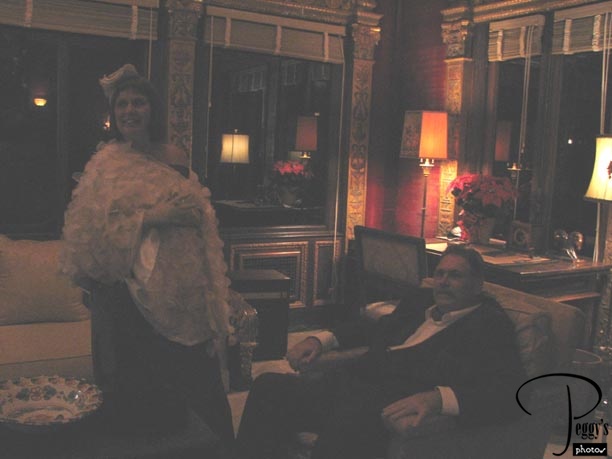
Living History docents.

Hearst Castle
Hearst Castle
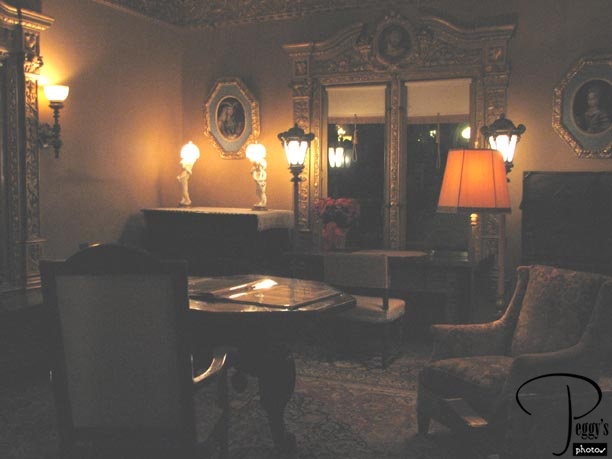
A sitting room.

Hearst Castle
Hearst Castle
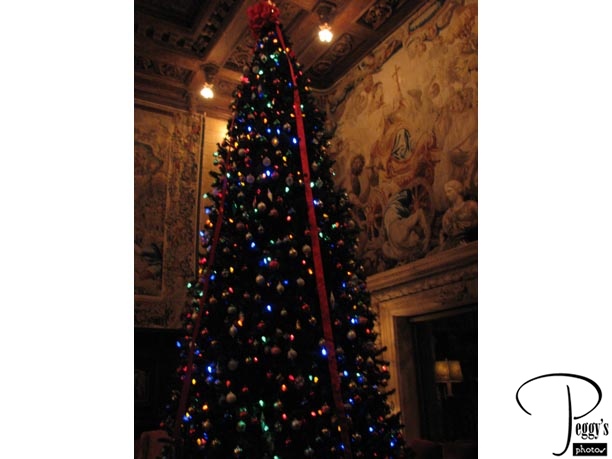
We are now in the Casa Grande, decorated for Christmas. Hearst Castle is a unique castle. You really can’t say it reminds you of another castle or a palace that you have seen somewhere. It stands on its own. Maybe you can say that it is a museum made into a home. Photo: One of the many decorated Christmas trees. We are in the Assembly Room.

Hearst Castle
Hearst Castle
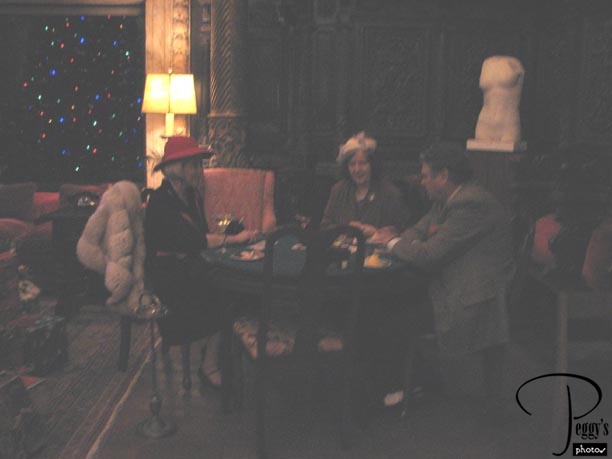
Living History docents in the Assembly Room.

Hearst Castle
Hearst Castle
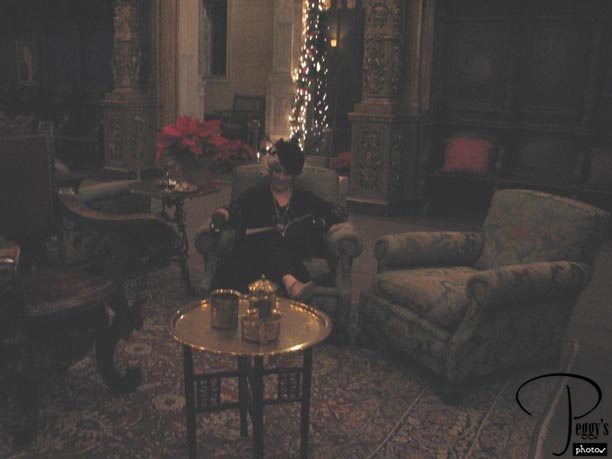
Another Living History docent in the Assembly Room.

Hearst Castle
Hearst Castle
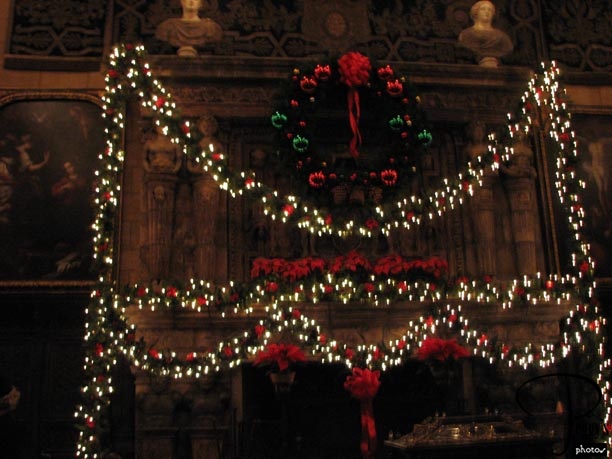
Assembly Room decorations.

Hearst Castle
Hearst Castle
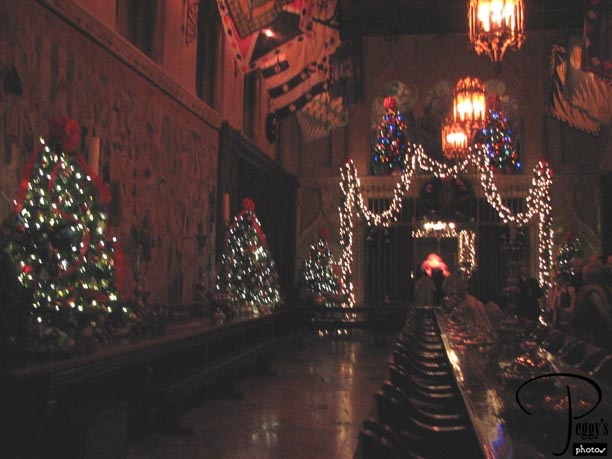
The Dining Room.

Hearst Castle
Hearst Castle
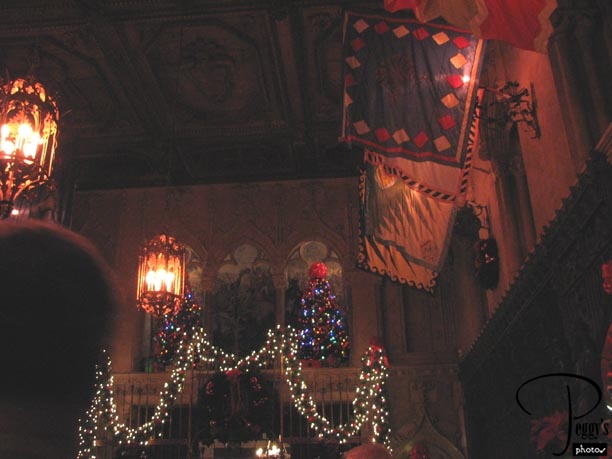
The Dining Room.

Hearst Castle
Hearst Castle
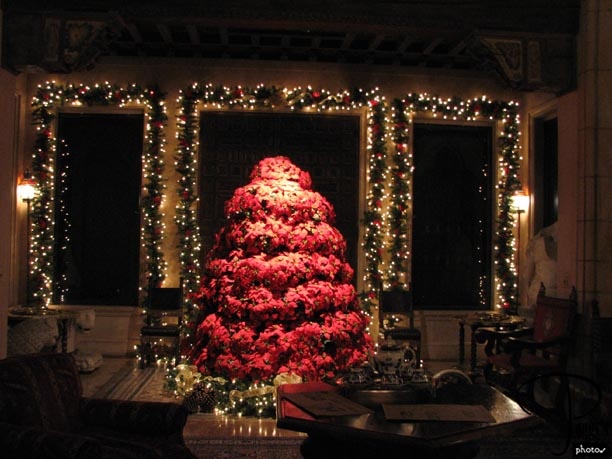
A poinsettia tree. I thought the poinsettias were real. I mentioned to Brian that I thought they were beginning to droop. Then he told me they were fake. Still very pretty.

Hearst Castle
Hearst Castle
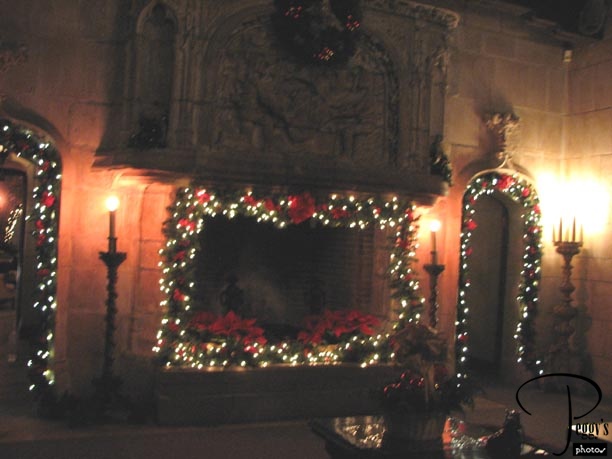
More Christmas decorations.

Hearst Castle
Hearst Castle
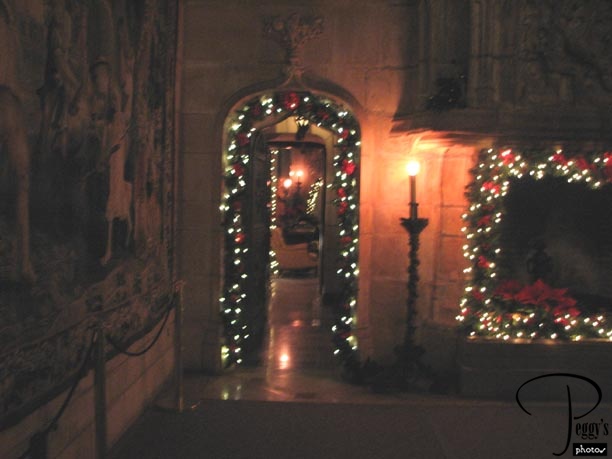
More decorations.

Hearst Castle
Hearst Castle
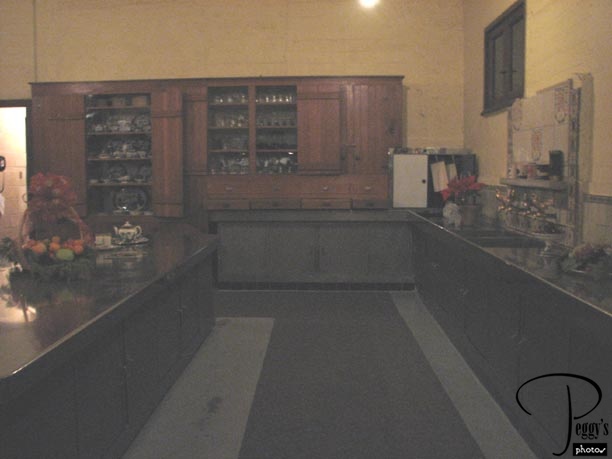
The kitchen and pantry.

Hearst Castle
Hearst Castle
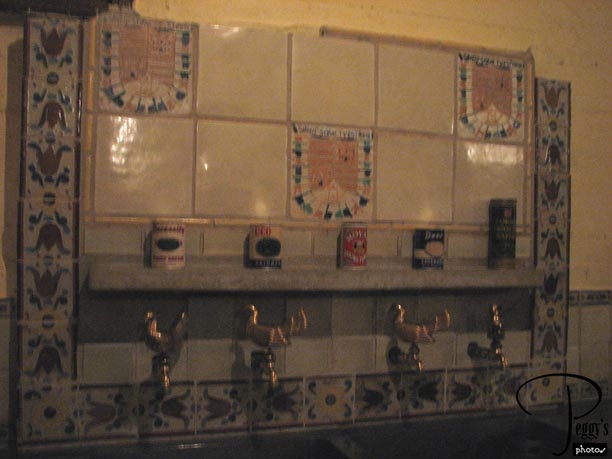
Tiles over a kitchen sink.

Hearst Castle
Hearst Castle
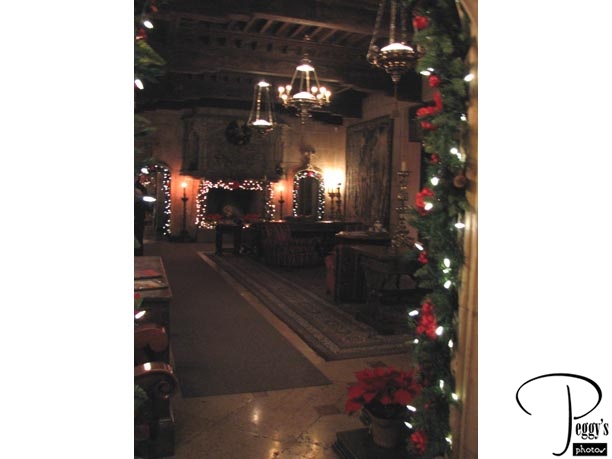
More decorations.

Hearst Castle
Hearst Castle
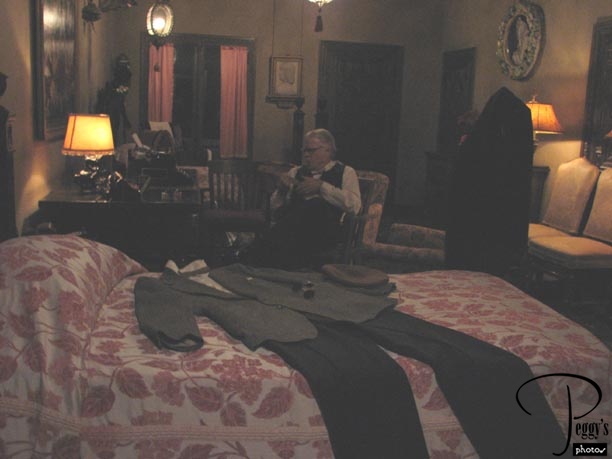
This Living History docent was playing a ukulele.

Hearst Castle
Hearst Castle
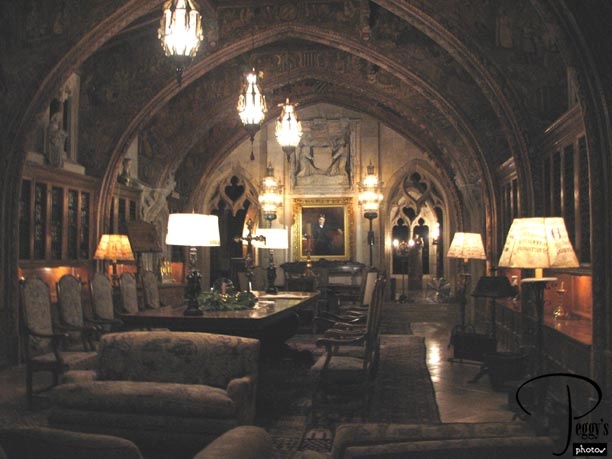
My favorite room: the Gothic Study.

Hearst Castle
Hearst Castle
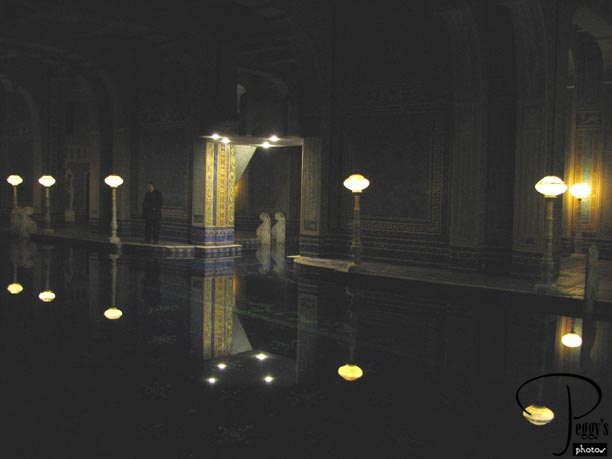
The Roman Pool––it is a gold–leafed indoor pool. This was the end of the tour and the end of another great day except for Linn’s chicken pot pie and Linn’s blueberry peach pie for dinner at Brian and Dale’s.
